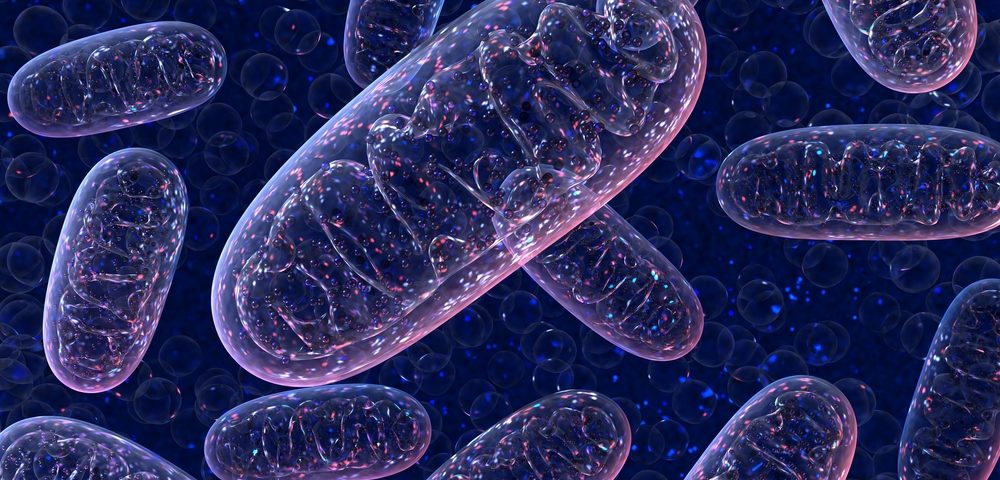 Mitochondria, are cellular organelles found in cytoplasm of real-core cells. Mitochondria are the cell's energy generator, responsible for cellular respiration and the synthesis of adenosine-ATP within cells. Each cell of one mitochondria can contain thousands of them. The mitochondria contain DNA outside the nucleus, symbolizing a number of rRNA, tRNA, and also a number of proteins.
Mitochondria, are cellular organelles found in cytoplasm of real-core cells. Mitochondria are the cell's energy generator, responsible for cellular respiration and the synthesis of adenosine-ATP within cells. Each cell of one mitochondria can contain thousands of them. The mitochondria contain DNA outside the nucleus, symbolizing a number of rRNA, tRNA, and also a number of proteins.The origin of Mitochondria:
The current theory is that mitochondria are present in endosymbiosis, as they and green plastids live within primitive nuclei, which are devoured by larger cells as food or parasites. At one point, the relationship became mutually beneficial. As a result, green plastids and mitochondria became permanent organelles in real-core cells. They were contained within cells and cellular mechanisms formed around them.
Mitochondrial structure:
Mitochondria are small cell organelles of 1-10 microns in length. It is either macaque or organic, and is encapsulated with two envelopes that isolate it from the cellular cytotoxic and other organelles within the cell. The lipid membranes consist of two layers containing proteins in between. The inner lining is pleated and forms an internal structure that helps to increase the surface area of the mitochondria and increases the efficiency of cellular respiration.
The area between the two cores is called the space between the membranes. Mitochondrial tissue is found inside the inner lining and contains ribosomes, enzymes and mitochondrial DNA. Mitochondria can multiply and make proteins separately from the rest of the cell, as they contain the enzymes needed for cellular translation, as well as the carrier RNA and ribosomes needed for the protein industry.
Mitochondrial DNA:
Mitochondrial DNA-mtDNA is typically a small circular circular molecule that encodes a number of proteins and RNA involved in the process of cellular respiration and cell proliferation. In some cells and fungi, the shape of this molecule is linear. Mitochondrial DNA is well preserved in many living species. For example, many mammals and birds contain identical genetic arrangement. MtDNA also contains non-coding parts, called D-loop, which are responsible for controlling the process of DNA division.
Unlike cellular DNA, which is inherited by both parents, mitochondrial DNA is not inherited in this way, as it is often inherited uniparently inherited (with some exceptions). For animals, mitochondrial DNA is inherited by the mother's egg (except for the two shells that are inherited from both parents). For plants, mitochondrial DNA may be inherited by the mother, father, or both. Some recent evidence shows that a small amount of mitochondrial DNA is inherited by parents and remains the largest proportion of maternal inheritance.
Mitochondrial DNA mutations produce a number of genetic diseases known to humans, especially those that affect energy consumption in the muscles or nervous system, including diabetes, heart disease, epilepsy, Kearn-Sayer syndrome, muscle neuron and Alzheimer's. These mutations were associated with degenerative diseases and aging.
Compared to normal nucleic acid genes, mitochondrial DNA develops ten times the same speed, making changes appear faster and in less time, and they change over a fixed time. For this reason, mitochondrial DNA is used in the study of evolutionary relationships and population genetics in the animal world and is one of the leading causes of the theory of out-Africa theory in human origin. It also helps to study evolutionary relations between humans and monkeys. Mitochondrial DNA mutates more slowly, and is therefore not widely used in the study of evolutionary relationships.
Mitochondrial Functions:
Mitochondria are involved in the conversion of sugars and fats into energy through cellular air respiration (cellular respiration). This metabolic function is ATP, the energy source in the cell considering several steps that require an oxygen element. Cellular respiration consists of three main steps.
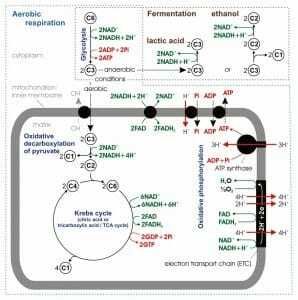
Photo caption: An overview of cellular respiration. Sugar degradation occurs in the cell membrane while the crepe cycle and phosphorylation occur within the mitochondria.
Sugar Decomposition:
Diabetic glycolysis occurs in the cytotoxicity by dividing the glucose into two different small types of sugars, which oxidize to produce pyruvate. Diabetic glycolysis may occur by air or non-aerobic. Technically, non-aerobic glycolysis is not part of cellular respiration, but is often included with it, as it produces a small amount of ATP.
During the process of glycolysis, the phosphorylation of one molecule of sugar (via the ATP molecule) is made to produce 6-phosphate glucose, which is rearranged to give us fructose-6-phosphate. The phosphorylation of this molecule is repeated to become fructose-1,6-diphosphate. In the next step, this sugar is divided into two molecules made up of three carbon atoms. These atoms convert to pyruvate by reductase reaction, resulting in two molecules of NADH.
And then by substrate-level phosphorylation, which gives us four molecules of ATP, producing a net diabetic glycolysis estimated by ATP molecules.
Citric acid cycle (also called triglyceride cycle)
In the presence of oxygen, a pyrotechnic compound is introduced by mitochondrial glycolysis. The cycle of citric acid or crepe cycle occurs within the mitochondrial tissue. This process converts the pyroflats to carbon dioxide by oxidation reactions. This course also produces NADH from the NAD +, which transmits the resulting electrons to the final phase of the cellular respiration process. This cycle produces two molecules of ATP.
The mitochondrial pyrotechnic component enters and converts acetyls to Acetyl Coenzyme A. Acetyl Coenzyme A. This transformation is stimulated by a number of enzymes, producing NADH and CO2 as the final product, and the acetyl group enters the citric acid cycle through 8 fully stimulated steps With a number of enzymes, which begins with the jacket complex and ends with the oxalacetate oxalate.
The addition of the acetyl group to the acetate oxalate results, and the cycle begins again. This disintegration results in a fraction of carbon dioxide and a molecule of ATP (by phosphorylation at the substrate level). The majority of the resulting energy is in the reduced form of the auxiliary enzymes NADH and FADH2. These resulting molecules are transported to the so-called electron exchange chain.
Image Link:
Image Link:
Phosphorous Oxidation:
Phosphorus oxidation consists of two steps: the exchange of electrons and chemical emulsification chemiosmosis. The latter is the largest producer of ATP in the cellular respiration process. The electron exchange chain uses the resulting electrons in the previous and portable steps via NADH and FADH2, to convert to a water molecule by combining hydrogen and oxygen ions. This process occurs in the inner mitochondria.
The electron exchange chain consists of 5 protein complexes (I to IV), which are repeated hundreds or even thousands of times in the folds of the mitochondrial inner tissue. These complexes consist of electron carriers that transport electrons released from NADH and FADH2 by a series of reduction reactions. A large number of proteins in this series are cytokrome, which is a symbol of mitochondrial DNA.
As the electron passes through this chain, it moves between a group of elements that are increasingly electrically charged until they reach the final stage, turning into an oxygen atom. This atom combines with hydrogen ions to form a molecule of water. The electron exchange chain itself does not produce any number of ATP.
ATP is produced by chemiosmosis, a process that occurs in the mitochondria. This process involves the formation of ATP from ADP (adenosine diphosphate) by an enzyme called ATP Synthase using inorganic phosphorus. This enzyme uses concentration differentials from hydrogen ions to produce ATP.
By moving the electrons in this series, the hydrogen ions drive out into space between the inner and outer layers of the mitochondria, forming a higher concentration of hydrogen ions in the outer part of the casing. The consumption of hydrogen ions during the formation of water molecules in the inner envelope increases this difference in concentration.
In the meantime, the hydrogen ions are trying to re-enter the inner layer of the casing to offset this difference in concentration. The only way this transit is ATP Synthase, the passage of ions charged by this enzyme changes its shape, allowing ADP and inorganic phosphate to merge.
This merger results in ATP. Phosphorus oxidation produces between 32 and 34 parts of the ATP of each sugar molecule, making it responsible for approximately 89% of the energy produced in the cellular respiration process.


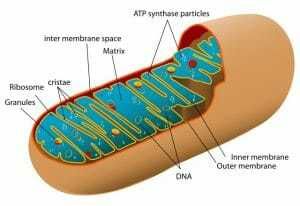
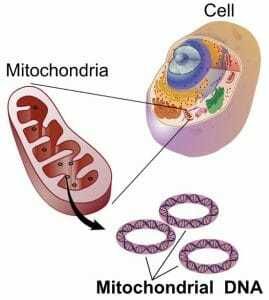
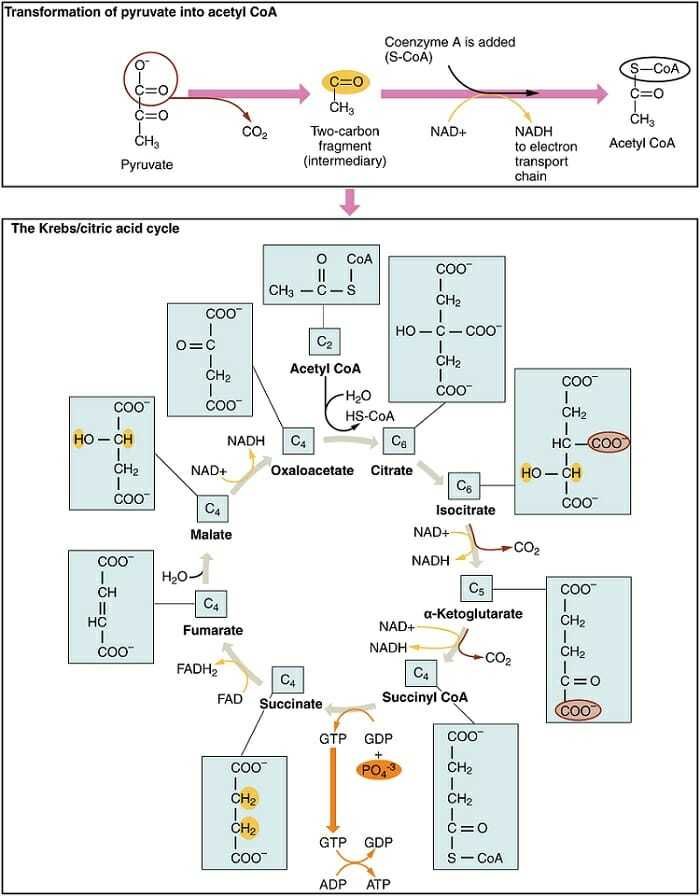







0 Comments